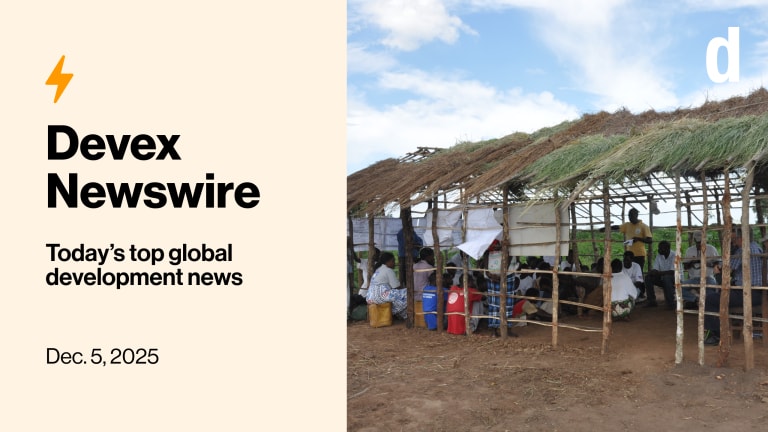
LONDON — Director-General of the International Committee of the Red Cross Yves Daccord has said that, in their current form, attempts to mainstream disability into humanitarian programs “will not work” and that the sector must instead focus on a broader approach to “diversity inclusion.”
Daccord told Devex on the sidelines of the Global Disability Summit in London last month that questions of inclusion are “critical,” but “I would be very careful now [saying] from the top, let’s mainstream disability. It won’t work. It will not work,” he said.
He added: “I would much rather label it as including diversity than including people with disability ... If [a donor] is asking me, please include diversity in all of your thinking, and programming and your designing, including people with disability, I would be much more at ease.”
See more on disability:
► Global Disability Summit yields 170 new commitments — but what's missing?
► Global Disability Summit targets faster progress on inclusive development
► How can we address violence against women and girls with disability?
Since the United Kingdom Secretary of State for International Development Penny Mordaunt put disability inclusion at the top of the U.K. aid agenda, stakeholders have been debating how best to make aid more disability inclusive, not just in terms of reaching those with disabilities, but also in increasing the influence of disabled persons organizations and those with disabilities in program and policy design.
Daccord said he welcomes “the fact that we are mobilizing around the question of disability,” but “what strikes me still is that we find it difficult to look at people that we try to serve, help, and protect as [actors]. We still somewhat look at them as victims, still, despite what we say. And of course, when we talk about people with disability it’s even more shocking.”
He added that true disability inclusion, like gender inclusion, will mean “they will design the programs themselves,” and said one of the most effective ways to increase disability inclusion has been to ask, “What can we learn from the areas where people with disability have been integrated into our organization?” and, “Can we apply that elsewhere?”
Daccord pointed to an ICRC-run physical rehabilitation program in Kabul, Afghanistan, as one example. “90 percent of our staff dealing with our rehabilitation program in Afghanistan — the biggest physical rehabilitation program in the world ... have disabilities. It has changed the way we look at this, totally,” he said.
“When we started the program, we didn’t think about that,” he added. “There was no KPI [Key Performance Indicator]. What’s interesting is it’s organic.”
Over time, he said, due to the program’s proximity to the community and the large-scale need for treatment, those patients and victims of the war who began as beneficiaries became delivery partners and staff.
The same has been true for gender inclusion, Daccord said. “69 percent of our operations are in the Muslim world, because of the world of today. As a man, in most of those places, I [can’t] access women when they have a problem.”
As a result, he said ICRC became more thoughtful about how it employed women in those geographies and how it sought out female beneficiaries. He said organizations can use the same lessons for overcoming the logistical, cultural, and psychological barriers to diversity inclusion across their operations, both in humanitarian contexts and within the organization.
Rather than taking turns focusing on one or two underrepresented groups and “mainstreaming” their inclusion across the sector one by one, Daccord explained that donors and agencies should replicate success where it occurs as part of this broader effort toward diversity inclusion. And they should do it not because of a “moral high ground” or advocacy push, but because it improves humanitarian response, he said.
“In a similar way, we’ve decided to integrate much more [on] gender, get a more balanced team and getting more parity. Why? Because it was much better for our business,” he said.
“Reflections around what is best, for in fact reaching out to people, and people with disability, it doesn’t work in humanitarian sector if you just take that based on principle, or based on policy, I don’t think it will work. I think it’s much more interesting if it comes from a place of improving the quality of our response and the interconnections.”
For more coverage on creating a disability-inclusive world, visit the Development Enabled series here.








